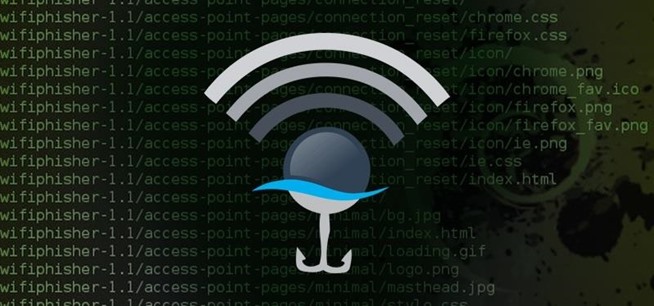Team Dx Facebook Password Hacker For Mac
. Foxtrot search server dl for mac. Tell us some more. Upload in Progress. Upload failed. Please upload a file larger than 100x100 pixels.
We are experiencing some problems, please try again. You can only upload files of type PNG, JPG, or JPEG. You can only upload files of type 3GP, 3GPP, MP4, MOV, AVI, MPG, MPEG, or RM.
You can only upload photos smaller than 5 MB. You can only upload videos smaller than 600MB. You can only upload a photo (png, jpg, jpeg) or a video (3gp, 3gpp, mp4, mov, avi, mpg, mpeg, rm). You can only upload a photo or a video. Video should be smaller than 600mb/5 minutes. Photo should be smaller than 5mb.
Team Dx Facebook Password Hacker For Mac Download
You can only upload a photo.
If you have made the switch from Windows to Linux, I want to congratulate you in advance. I'm sure you have noticed a huge performance increase when using Linux over other operating systems. This is only half the battle, though! Most users who are new to Linux end up using.
Free Facebook Hacker For Password
I have no gripes with Ubuntu, but I do not agree with their philosophy. It almost mimics Windows. Ubuntu favors ease of use, and despite valiant efforts by the development team thus far (Ubuntu is crazy fast), all of the bloat has to catch up to it some time. Besides, Arch is still faster out of the box and comes with zero bloatware. One of the biggest reasons that Linux trumps Windows is because Windows is built with user-friendliness first. Because of this, Windows comes with nearly all of its services enabled by default (there are hundreds) which chokes its speed.
The same proves true for Linux—if you want the most speed, you have to make sure you're running as little as possible. In today's, I am going to go over some cool tricks and tips to keep your Linux rig running speedily and efficiently. Step 1 Clear Temporary Files Regularly Your OS stores temporary files all of the time. Files such as images get written to the disk in order to speed up access times.
At least, that is why they used to do it. With RAM speeds and capacities, I wouldn't be surprised if clearing them isn't an issue soon, because they do not need to be stored. In the mean time, we must clear temporary files, such as packages and image thumbnails regularly, or our hard drives will become littered with small files, greatly reducing our speed. Clear out the Pacman package manager.

Sudo pacman -Scc. Use, a termporary file cleaner and shredder, to clean the disk. It's a great tool that will take care of all of the small temporary files quickly and securely. Configure, compile and install it./configure && make && sudo make install Linux doesn't need to be defragmented, so do not worry about that.
Step 2 Disable Unused Daemons & Remove Useless Software Daemons can take up a lot of resources, but even more so, they can immensely increase your boot time. A boot time can go from 5 seconds to well over 120 with the addition of a simple daemon.
So at the very least, we need to push some of these processes to the background to speed up boot times a bit. To really get a speed increase, you must stop the daemons. Preface daemons with @ to push them to the background,! To disable them. Ubuntu users should look in /etc/init.d/ to find their installed daemons, and uninstall them according to their names.
Arch users should look in /etc/rc.d/. Edit the startup scripts to disable daemons.
Ubuntu: sudo nano /etc/init Arch: sudo nano /etc/rc.conf. List all of your packages and get rid of ones you don't use (rule of thumb, if you don't know what it is, don't delete it). Arch users have this spiffy command to find orphaned packages that are no longer needed. Sudo pacman -Rns $(pacman -Qdt) Step 3 Switch to Lighter Programs & Window Manager Swapping out all of your heavy programs to the ones I have listed can be a huge performance boost as well. You can also switch to a Window Manager, instead of using a Desktop Environment. A full DE such a uses a ton more resources.
Here is a comparison of idle processor usage between KDE and awesome-wm. KDE: 5.5% Awesome: 0.1% Is it worth it? Tell me in the You can also follow me on and for the latest Null Byte news and updates.

Team Dx Facebook Password Hacker For Mac Free

Image via Related.
Most Viewed Articles
- S5360 Usb Drivers For Mac
- Juicer 3.89a For Mac
- V Stream Vs Tv878rf Driver For Mac
- Dwg Importation Problem
- Epson Stylus Pro 4880 Colorburst Edition Free Driver Download
- Cheap Logitech Solar Keyboard K750 Dk For Mac
- Teamviewer Download For Mac
- Linksys Wusb54g V4 0 Drivers For Mac
- Easyframe For Mac
- Asus Vh192d Drivers For Mac
- Softkey Key Cad Complete For Mac
- Jual Creative-edge-software-ic3d-suite-v4.1.0 For Mac
- Something Is. Free Architectural Drawing Programs For Mac
- Using Cocoa Programming For Mac
- Hp Printer D4160 Drivers For Mac
- Microsoft Ogosi Ceny Zestaww Office For Mac
- Screenflow: Screen Capture Video Editing Made Easy For Mac
- Extra Cheats Dll For Mac





